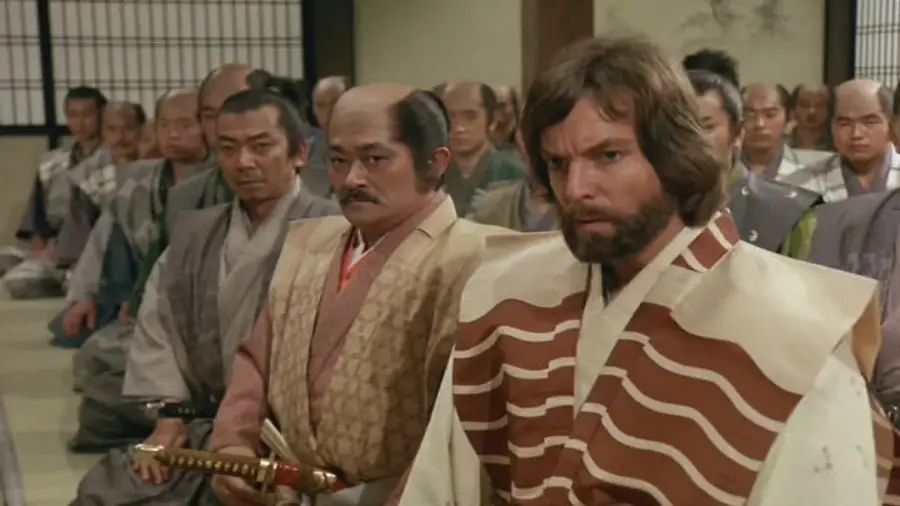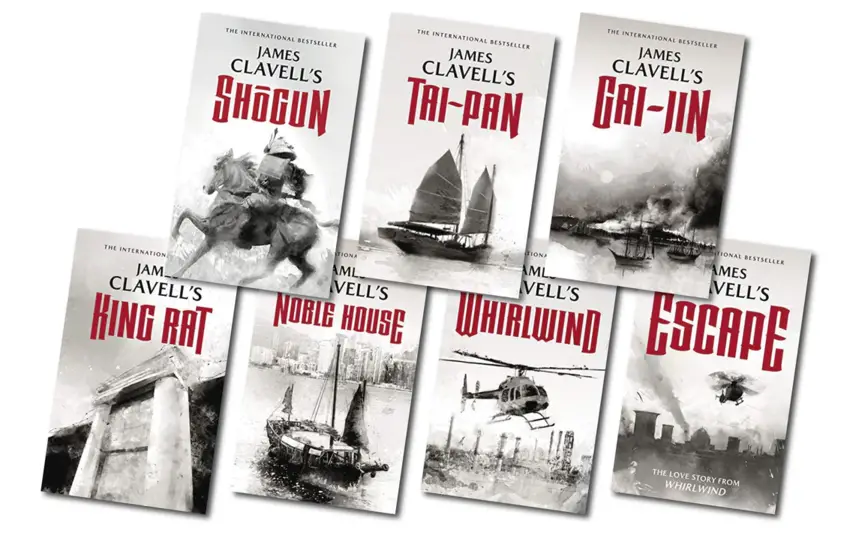The 1980 American historical drama television miniseries “Shogun” remains a landmark in television history, captivating audiences with its in-depth exploration of Japanese culture and politics in the early 17th century. Based on James Clavell’s 1975 novel of the same name, “Shogun” was not only a ratings hit but also a cultural phenomenon that brought the complexities of samurai culture to the forefront of Western consciousness. (Get the book from Amazon – link here.)
A new rendition of the Shogun will start in late February 2024 as a TV Series and will be available on Hulu and FX. The main role is played by Cosmo Jarvis (as John Blackthorne), Hiroyuki Sanada (as Lord Yoshii Toranaga) and Anna Sawai (as Toda Mariko).
Here are 25 interesting facts about the Shogun TV Series:
1. Star-Studded Cast: Richard Chamberlain starred as the protagonist, John Blackthorne, an English navigator who becomes embroiled in the political intrigue of feudal Japan. The series also featured Toshiro Mifune, a legendary Japanese actor, as Lord Yoshi Toranaga.
2. Historical Inspiration: While “Shogun” is a work of fiction, it was inspired by the real-life adventures of William Adams, an English navigator who became a samurai and close advisor to Tokugawa Ieyasu, the shogun who unified Japan.
3. Language Barrier: One of the series’ most unique features was its use of Japanese language without subtitles. This bold choice immersed viewers in Blackthorne’s experience, emphasizing the language and cultural barriers he faced.
4. Filming Locations: “Shogun” was primarily filmed in Japan, making it one of the first American productions to shoot extensively in the country. The production used various historic locations, adding authenticity to the series.
5. Massive Budget: At the time of its production, “Shogun” was one of the most expensive television projects ever undertaken, with a budget exceeding $20 million.
READ MORE: James Clavell’s Asian Saga Order | How and when to read “Shogun”?
6. Critical Acclaim: The series received widespread critical acclaim, praised for its storytelling, production values, and performances, particularly Mifune’s portrayal of Toranaga.
7. Emmy Success: “Shogun” was nominated for multiple Emmy Awards and won several, including Outstanding Limited Series.
8. Golden Globes: The series also enjoyed success at the Golden Globe Awards, winning Best Television Series – Drama.
9. Cultural Impact: “Shogun” significantly impacted Western interest in Japanese culture, leading to increased study and appreciation of Japanese history, language, and martial arts.
10. Viewer Ratings: The series was a ratings juggernaut, with its premiere attracting over 30 million viewers in the United States alone.
11. Comprehensive Research: James Clavell, who also served as an executive producer, conducted extensive research to ensure the series accurately depicted Japanese culture and the historical period.
12. Innovative Storytelling: The series was notable for its non-linear storytelling, complex character development, and exploration of themes such as honor, duty, and cultural assimilation.
13. Educational Content: In addition to its entertainment value, “Shogun” was praised for its educational content, providing viewers with a deep dive into the societal structures and traditions of feudal Japan.
14. Merchandising: The success of “Shogun” led to a wide range of merchandise, including novels, board games, and even a video game, further cementing its place in popular culture.
15. International Appeal: While particularly popular in the United States, “Shogun” also enjoyed success internationally, translated into multiple languages and broadcast in several countries.
READ MORE: James Clavell’s “Shogun” | The Ultimate Chapter Summaries
16. Challenges in Production: The production faced numerous challenges, including language barriers, cultural differences, and the logistical complexities of filming in remote Japanese locations.
17. Revolutionary Costume Design: The costume design was meticulously researched and crafted, contributing significantly to the series’ authenticity and visual appeal.
18. Extensive Training: Actors underwent extensive training in Japanese customs, language, and, for some, martial arts, to convincingly portray their characters.
19. Impact on Tourism: Following the series’ success, Japan saw a noticeable increase in tourism from fans wanting to visit filming locations and historical sites depicted in the series.
20. Book Sales Boost: The miniseries significantly boosted sales of Clavell’s novel, propelling it to bestseller status and introducing it to a new generation of readers.
21. Pioneering Special Effects: For its time, “Shogun” utilized groundbreaking special effects to depict sea battles and other complex scenes, setting a high standard for future television productions.
22. Extended Runtime: The original broadcast spanned five nights, totaling over nine hours of television, making it one of the longest miniseries of its era.
23. Diverse Audience: “Shogun” appealed to a wide range of viewers, from history buffs to drama enthusiasts, showcasing the universal appeal of well-told historical narratives.
24. Legacy: Decades after its premiere, “Shogun” is still considered a benchmark for historical drama on television, influencing numerous subsequent productions in the genre.
25. Preservation: Recognizing its cultural and historical significance, “Shogun” has been preserved and restored for future generations, available on DVD and streaming platforms with enhanced picture and sound quality.
READ MORE: “Shogun” by James Clavell | 10 key narrative and thematic elements
“Shogun” not only entertained millions but also educated them about a pivotal era in Japanese history. Its legacy as a pioneering work of historical fiction on television endures, demonstrating the power of storytelling to bridge cultures and time periods.




